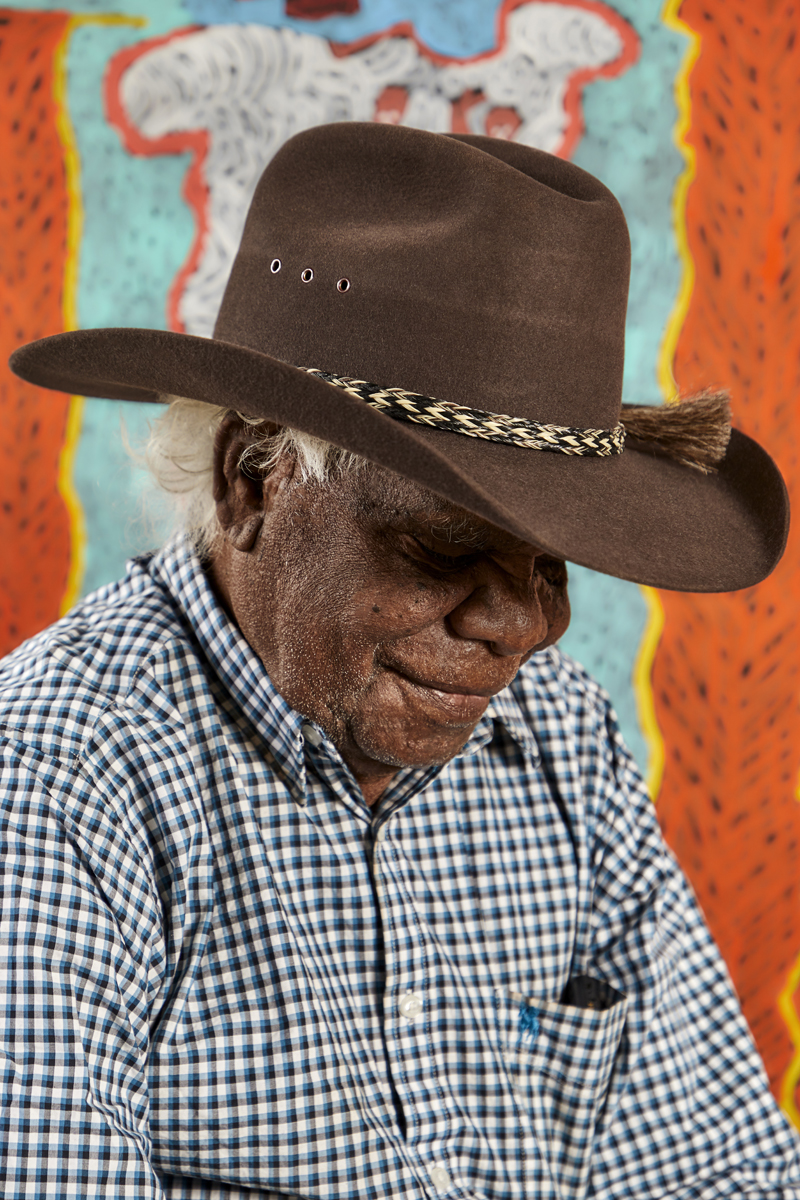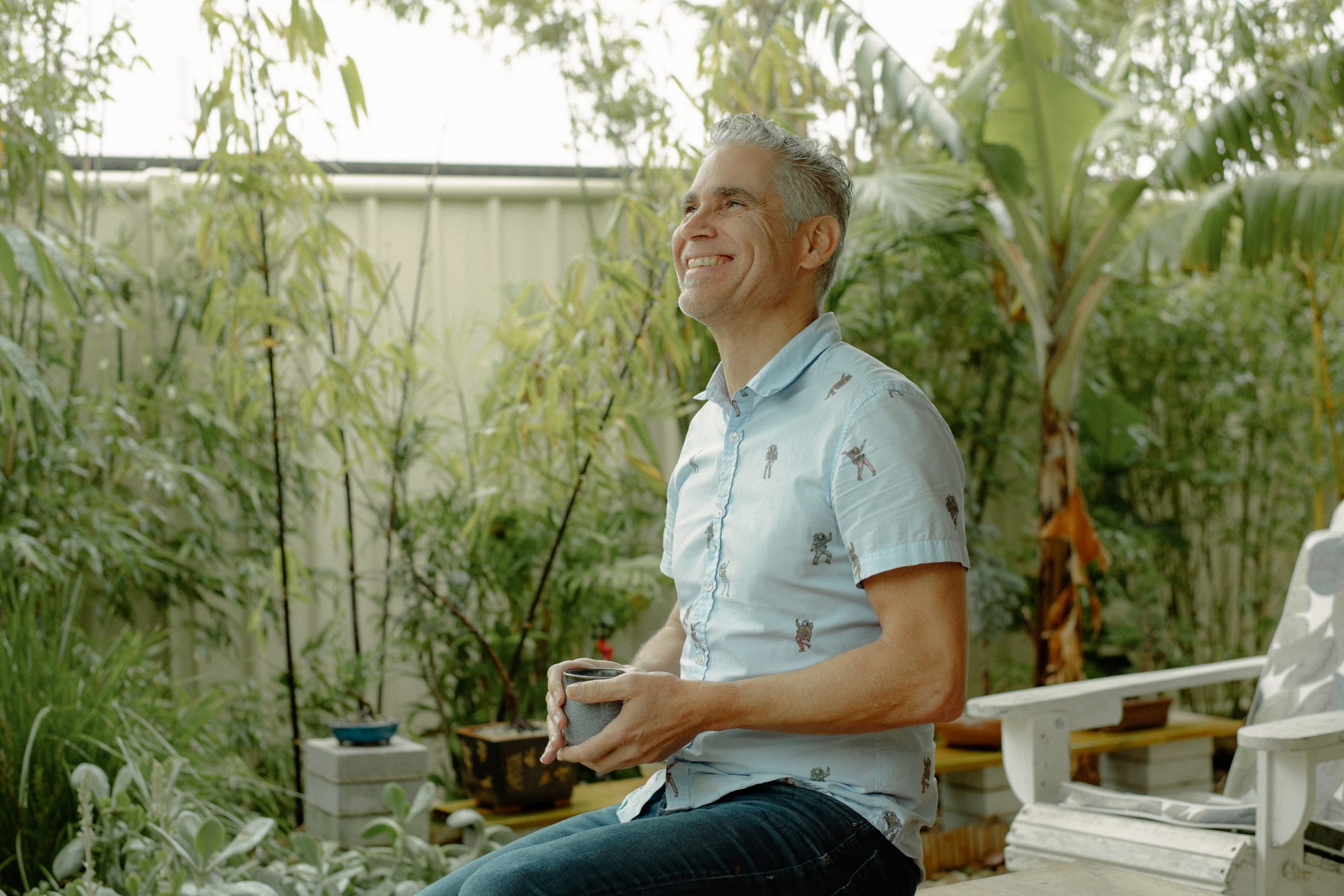Sarah Bahbah uses art to tell her story
One of Western Australia’s most successful international artists, Sarah Bahbah’s photographic series create spaces where she is free to be herself—and empower others to express themselves too.
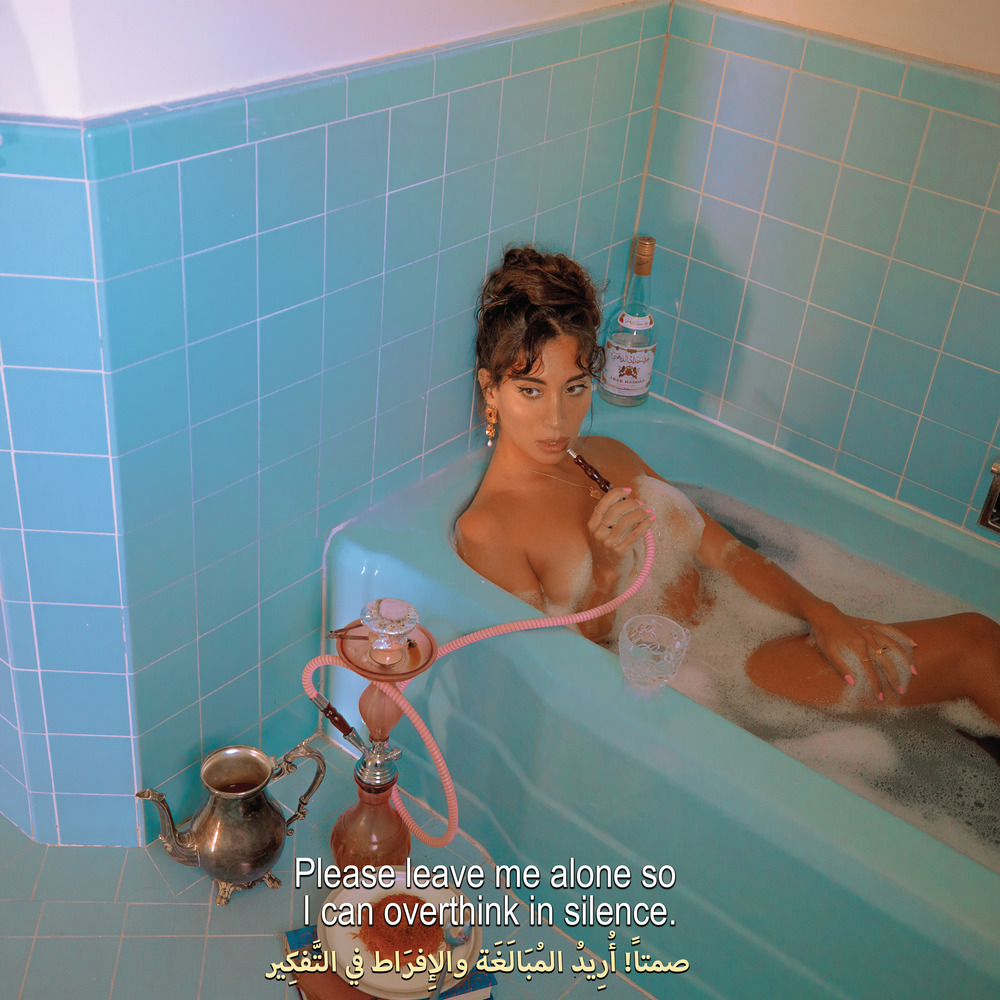
Sarah Bahbah Silence 2021. Colour photographic print, 127 x 127 cm. Courtesy of artist Sarah Bahbah.
Some people are born to create. That is certainly true for artist Sarah Bahbah, who left Perth aged 21 and is now known around the world for her sensuous cinematic photo series—recognised for their poignant subtitles, exploring vulnerability, romance, desire and heartbreak. Bahbah’s work reflects an uncontainable need to make and to write; to tell her own story through art.
Now based in Los Angeles, Bahbah is prolific in her art making. Since her breakout series Sex and Takeout in 2014, she’s released nine others, all exploring her different life experiences as a woman, a Palestinian/Jordanian Australian, a child of immigrants. They are at once navigations and declarations of the many things that make her up.
She’s amassed an Instagram following of more than one million people with whom she converses like friends. This is where she shares her artwork—with each new series, she posts one image per day until the whole story has played out in all its dreaminess and sublime colour. The images tug on her audience to check in daily; like moths to an intermittent flame.
Bahbah has evaded many of the art world’s more conventional pathways. Though she has worked with galleries in the past, she has been independent for several years now and, in 2020, introduced a “pay what you can” system for her prints, honouring the connection her audience members—coming from a range of backgrounds and income levels—feel and express with her work.
She says she loves the community she has found for herself in LA, but acknowledges the influence of her hometown in her work. “That sunset, the colour, the warmth that I use in my photos—that comes from Perth warmth,” she says. “That nostalgia, that feeling of the sun coming down and it’s always just so orange and yellow. I wanted that energy to always carry on in my work, and it does.” Here, we speak about her journey of finding her voice as an artist and the importance of making space for ourselves to be free.
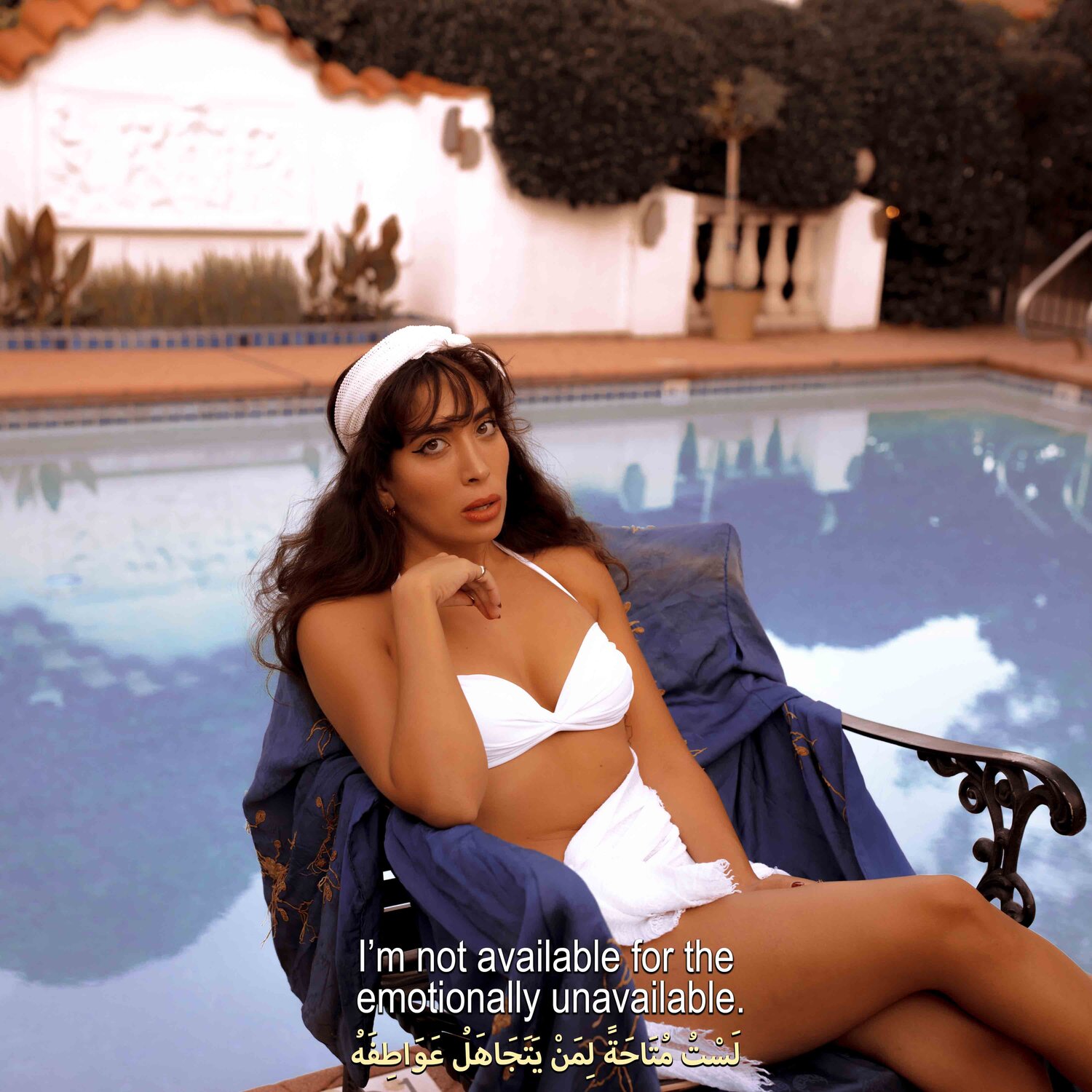
Sarah Bahbah Emotional 2021. Colour photographic print, 127 x 127 cm. Courtesy of Artist Sarah Bahbah.
You grew up in Perth, in a Palestinian/Jordanian household. What was your early life like, and when did you decide to leave?
I was born at Bentley hospital and raised on the suburban streets of Parkwood by Palestinian/Jordanian parents who immigrated from the Middle East in the early 80s. Several members of my family lived on my block, in different houses. We gathered most nights; our homes were always filled with the smell of Ahweh [Arabic coffee], laughter, heated debates, and the dramatic screams echoing from the television at 4am as my parents streamed Egyptian soap operas every night.
The day after my 21st birthday, I packed my belongings and moved to Melbourne to pursue a promotion I was given at work. There was never an exact reason why I felt I had to leave Perth. It was just a knowing that I had to.
When did you discover photography?
In my final years of high school my sister Nancy, who was studying creative advertising at Curtin University, encouraged me to use her DSLR camera to take photos of subjects I wanted to paint for my high school art portfolio. I found myself completely wrapped in this art form and soon enough photography became my passion. I remember the first music festival I ever shot was Blues ‘N Roots. I still have the email I sent to the press contact from the festival’s website. I wrote, “Hey, I’ve just started this blog”—it was called Raised by the Wolves—and I’m like, “I’m really passionate about shooting, can I please just come and take photos?”. She took a chance on me and that birthed this whole next phase of my life. I would chase festivals around Australia and the US, I’d sneak backstage and get in trouble after the fact. It was such a fun ride. That went on for years and soon enough I was invited by the festivals to come and shoot.
You made your breakout series Sex and Takeout while living in Melbourne. What prompted you to make that work?
Sex and Takeout was birthed from wanting to celebrate indulgence and to liberate myself from the guilt and shame I had around my body and sexuality. I had started my recovery process from what felt like a lifelong eating disorder. I wanted to give myself permission to be able to eat what I want, when I wanted, without feeling guilt or shame around my body. I love to express myself, I love to indulge without having the disruption of someone policing me. I wanted to create something that really captured the woman I was becoming away from everything I’d known. I realised I had a lot of fire in me, and it was time to start claiming my identity away from home.
It’s clear that the internet has always been a huge part of your journey; a way for you to access your audience and build a community. How was Sex and Takeout received online?
It wasn’t until I planted a community post on BuzzFeed that Sex and Takeout went viral. I planted it on a Monday night in early January 2015, and the next day, I woke up and it was on every single online publication you could possibly imagine. I woke up to fifty thousand new followers and thousands of emails; galleries wanting to rep me, people wanting press interviews.
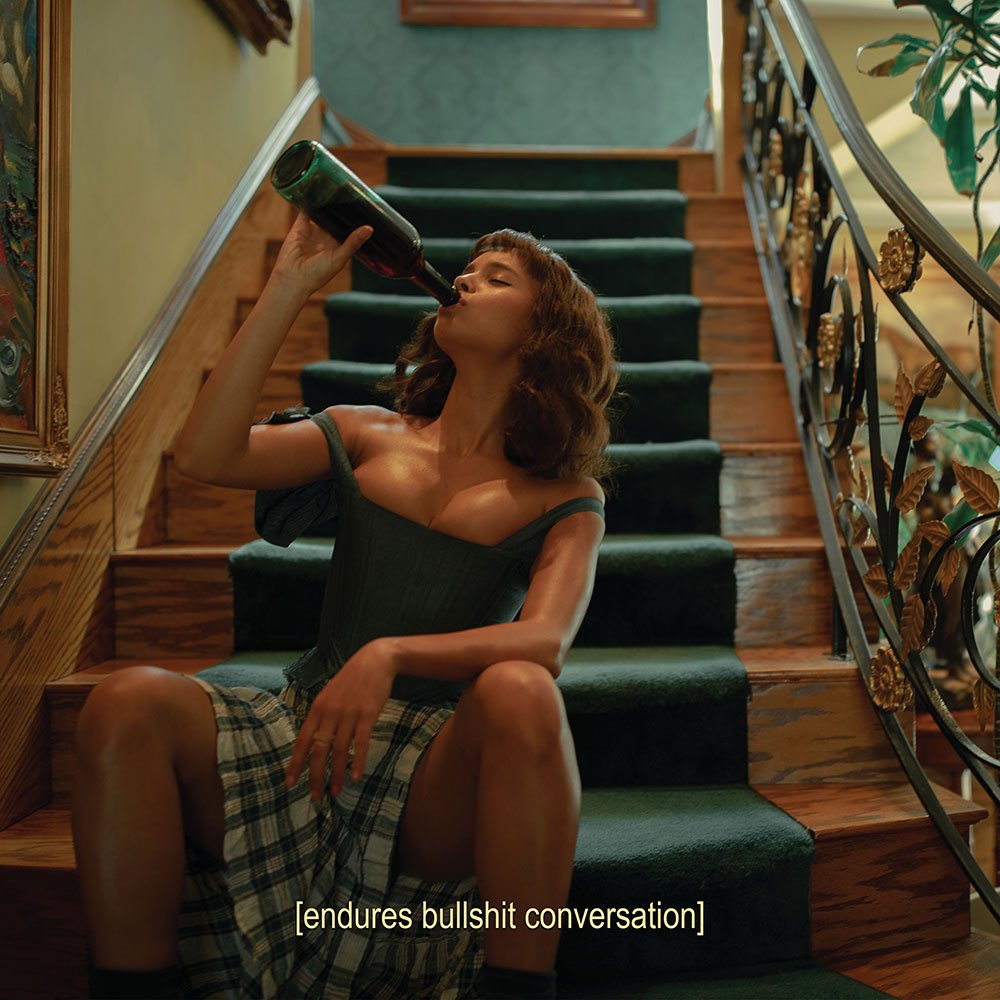
Sarah Bahbah Bullshit 2021. Colour photographic print, 127 x 127 cm. Courtesy of Artist Sarah Bahbah.
Tell me more about that first subtitle series, Summer Without a Pool. What was the thinking behind the subtitles?
Summer Without a Pool was created on the back of creative block that had gone on too long and a sense of knowing that my next big idea was near. I could feel it, I just didn’t know what it was yet. I was visiting Perth at the time in hope to rid myself of this block. After a lot of meditation on the beaches of Dunsborough I returned to my family’s home in Atwell and it hit me. I was inspired by screen shots of French films on Tumblr and decided to challenge the Instagram platform in a new way by creating subtitled stills that appeared as though they were from films but were actually individual photographs. Each piece stood alone and was open to interpretation by the viewer, but when the body of work was brought together, it was my story.
What other series have been important in your journey of finding your voice in your work?
At the end of 2016, my first year living in America, I was back and forth between Los Angeles and New York and I had experienced my first LA heartbreak. I didn’t have any community—I went from having a huge, strong, supportive system in Perth and Melbourne to having literally no one. It put me in such a state of apathy and discomfort, I disassociated completely. I left my body. I was so displaced. I decided to make huge changes to my life which altered my work in a big way. I started going to therapy, I stopped drinking. I got a new house, I started living by myself. That is when I started writing For Arabella, which ended up being a really huge series for me because it was so personal and it was a monumental start to using my art to heal. The more I was uncovering in therapy, the more story I had to tell. I couldn’t stop writing. Then in 2018 I released I Could Not Protect Her, which was the first time I spoke publicly about my trauma around child sexual abuse. That was a pivotal moment as well. And in 2020, 3eib! was the first time I ever put myself in a series.
What made you decide to put yourself in your work?
The pandemic. When things became still, I started having visions about what my life could look like if I was more public facing, if people recognised me not just for my art but also for my physical identity. I realised I had so much shame around what I looked like. I was never comfortable with the way I looked and it stemmed from growing up in Perth and going to mostly white schools. I did get severely bullied in primary school. There was this one girl that would call me dirty. She told everyone I had nits just because I had big brown wavy hair. My hair didn’t fit the colonised state of mind. I began to whitewash myself and try to change the way I looked in order to fit into these spaces.
It wasn’t until I got to the US that I realised I am perfectly acceptable as I am. In the pandemic, I sat down with myself and asked: “What are you holding on to? Why do you not want to be in front of the camera? What is it that hurts the most? What are you afraid of? People see you every day, they know exactly what you look like. They tell you you’re beautiful. So what is it?”. I had to really unpack it. And I went back to the first five years of my life when I was told I wasn’t pretty, or I was dirty, or I wasn’t cute enough, or my nose was weird, or the food I ate was weird. I did the inner child work to work through it all. Then I was like: “You’re doing this, you’re gonna put yourself in front of the camera. It’s time.” And I did. I think that was the most impactful series I’ve released, especially for Arab women.
You talk about your earlier work being an attempt to distance yourself from the constraints of your family or culture; but 3eib! was a kind of reclamation of your Arab identity. How does it feel to navigate both of those worlds? What was important to you about that series?
Growing up in Perth, in my household with my family, I never felt like I was Arab enough for the Arab world. And in school and college, I never felt white enough for the Western world. What I struggled with most, and what I know a lot of children of immigrant parents struggle with, is finding a place where we fit in, where we can embrace our identities of being both Arab and Western. With 3eib!, I wanted to create a place that was my own, and where I could be a sexually empowered Arab woman who indulges in her body and herself and her thoughts and her desires. I wanted to make that space because it doesn’t exist yet in the real world. By creating it for myself and truly embracing my identity as a Western Arab, which I am, I’m hoping that other children of immigrants from Arab and Middle Eastern households can create this space for themselves too, and give themselves permission to erase the shame and the guilt. My friend Rotana calls it “coming into our third”. We have layers and our “third” is like our own space. It’s the hyphen. It’s the “being both”—because we are, we’re both. We’re not one or the other.
I know you receive a lot of personal responses via Instagram DM to your work. How was that work received by Arab women?
It was extremely viral. In the Middle East, every single woman I know messaged me being like: “Wow, this really resonates.” But people from all over the world are experiencing that guilt or shame of not being able to truly embrace their identity because they don’t feel like they belong. This is a universal problem for children of immigrants. We’re all collectively coming together and realising there isn’t a space for us and we’re creating it. But that was my first series with both Arabic and English subtitles, and by doing that, it was pretty major for my art and for the people who witnessed it. The messages I got back made it clear it was needed, it was much needed. I do tend to disassociate after releasing a series, but I so appreciate every response. Once I’ve had some time to come down, I read those messages and they make me feel like I’m doing something right. I’m on the right path. It’s a beautiful affirmation to know that by doing my own inner healing and really allowing myself to be vulnerable, it really does help others do the same. We all have to do that at some point—face ourselves.
This article was first published in the print publication The View From Here in October 2021 under the title Something Right.
